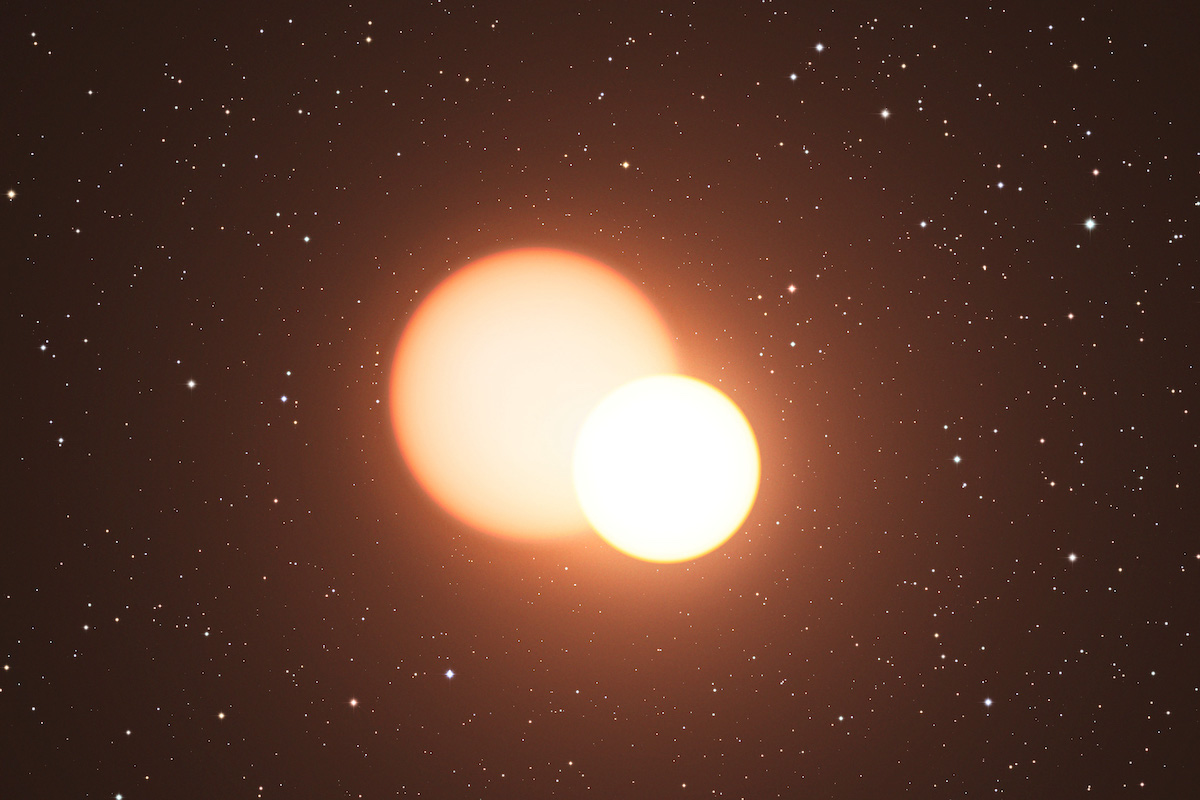Binary stars, also known as double stars, are a fascinating and important topic in astronomy. They are two stars that are gravitationally bound to each other and orbit around a common centre of mass. Binary stars come in a variety of types, each with its own unique characteristics and properties.
The most common type of binary star is visual binary, which can be observed directly through a telescope. They consist of two stars that are separated by a large distance and can be easily resolved as two distinct stars.
Visible binary stars can be further classified into two categories: optical binaries and physical binaries. Optical binaries are pairs of stars that appear close together in the sky but are not actually gravitationally bound to each other. They are often the result of the chance alignment of two stars along the same line of sight as seen from Earth. On the other hand, physical binaries are binary star systems that are truly gravitationally bound to each other.
Another type of binary star is spectroscopic binary, which is detected through changes in their spectral lines caused by the Doppler effect as they orbit around each other.
Binary stars can also be classified as eclipsing binaries, which occur when one star passes in front of the other, causing a dip in brightness as seen from Earth. This type of binary star is essential in determining the physical properties of the stars, such as their mass, radius, and temperature.
Binary stars play a crucial role in astrophysics as they provide a unique opportunity to study the properties and evolution of stars. By analysing the orbits of binary stars, astronomers can calculate their masses and determine the composition of their atmospheres. Binary stars also help in the study of stellar evolution, as they provide a way to determine the age of a star and its distance from Earth.
Binary stars are formed in several ways, including the fragmentation of a molecular cloud or the capture of a star by a pre-existing binary system. The study of binary stars has also led to the discovery of exoplanets, planets that orbit around stars other than the sun.
In conclusion, binary stars are fascinating objects that provide a wealth of information about the universe. They come in various types and are formed through different mechanisms. The study of binary stars has played a vital role in our understanding of stellar properties and evolution, and their importance in astronomy cannot be overstated.
Binary stars visible from Earth
Binary star systems are fascinating objects in astronomy, and there are many famous examples that can be observed from Earth. Here are a few of the most well-known binary stars:
Albireo
Albireo is a visual binary star system located in the constellation Cygnus. It is one of the most famous binary stars and can be seen with the naked eye as two stars that appear close together. Albireo’s two stars have contrasting colours – one is a yellow-gold colour, while the other is blue.
Mizar and Alcor
Located in the Big Dipper constellation, Mizar and Alcor are a famous binary star system that have been observed since ancient times. Mizar is a physical binary system, while Alcor is an optical binary that appears close to Mizar in the sky.
Capella
Capella is a binary star system located in the constellation Auriga. It is one of the brightest stars in the night sky and consists of two yellow giant stars that are separated by a distance of about 10 AU.
Sirius
Sirius is the brightest star in the night sky and is located in the constellation Canis Major. It is a binary star system consisting of a main-sequence star (Sirius A) and a white dwarf companion (Sirius B).
Antares
Antares is a binary star system located in the constellation Scorpius. It is a red supergiant star that is orbited by a smaller companion star.

